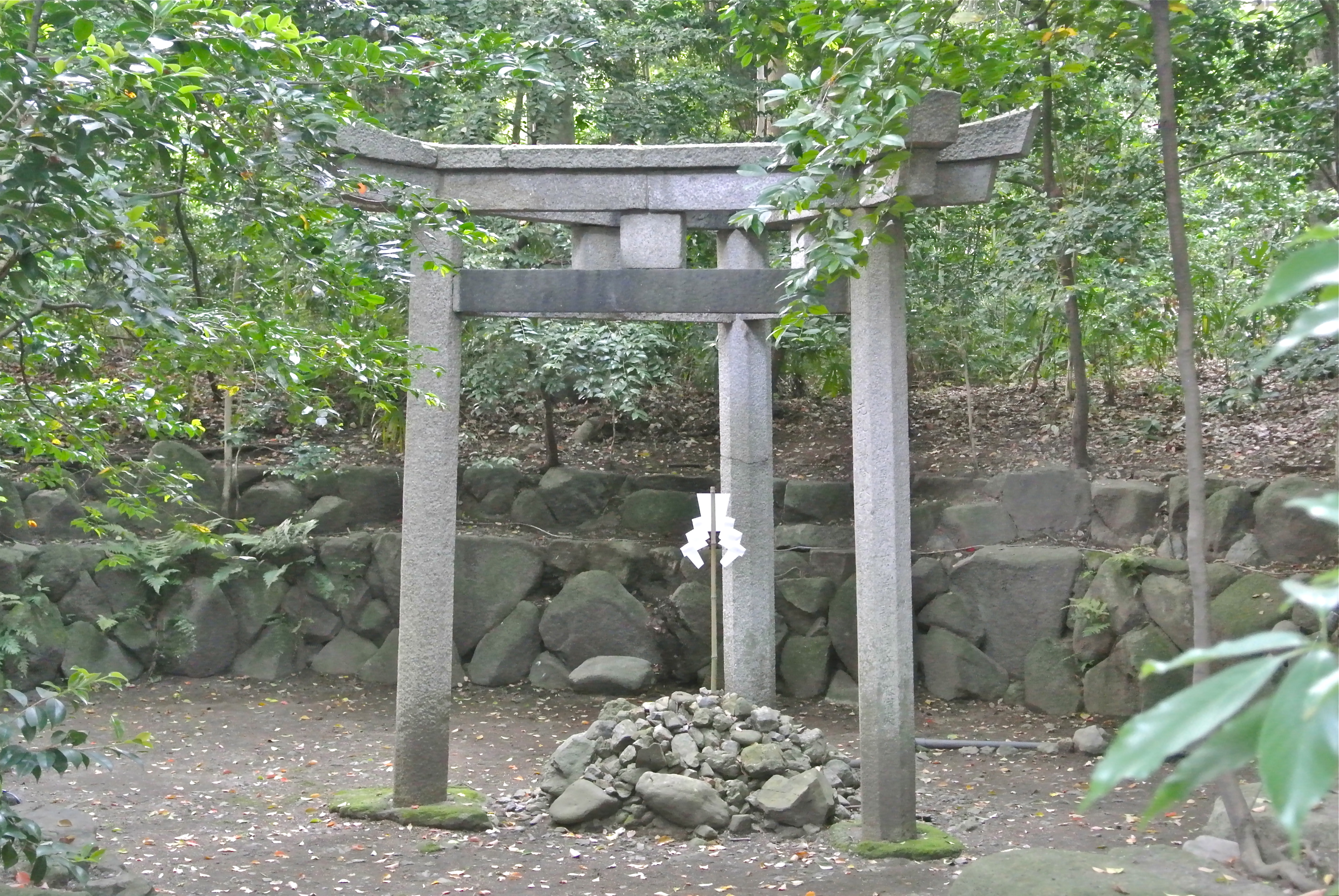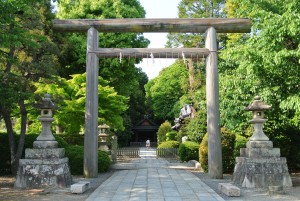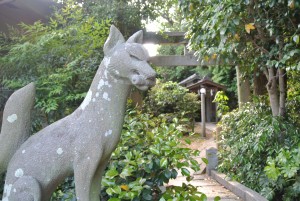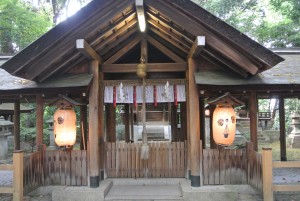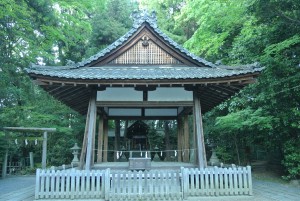According to the internet, there are seven triangular torii in the whole of Japan. Most of these are modern constructions, and may simply be copies of Kyoto’s Konoshima Jinja. Only one other has a genuine claim of antiquity – on the island of Tsushima, close to Korea. I happen to have visited that too.
A noticeboard in the grounds of the Konoshima Jinja says that the original construction of the triangular torii is unknown, but records show it was rebuilt 300 years ago after a fire. Regarding the purpose, there are two theories. One concerns the descent of the kami into the pile of stones in its midst, with the ‘spirit-body’ open to worship from all sides. The cosmic connection, open to the heavens, would thus have been complemented by the all-round access and immersion in nature.
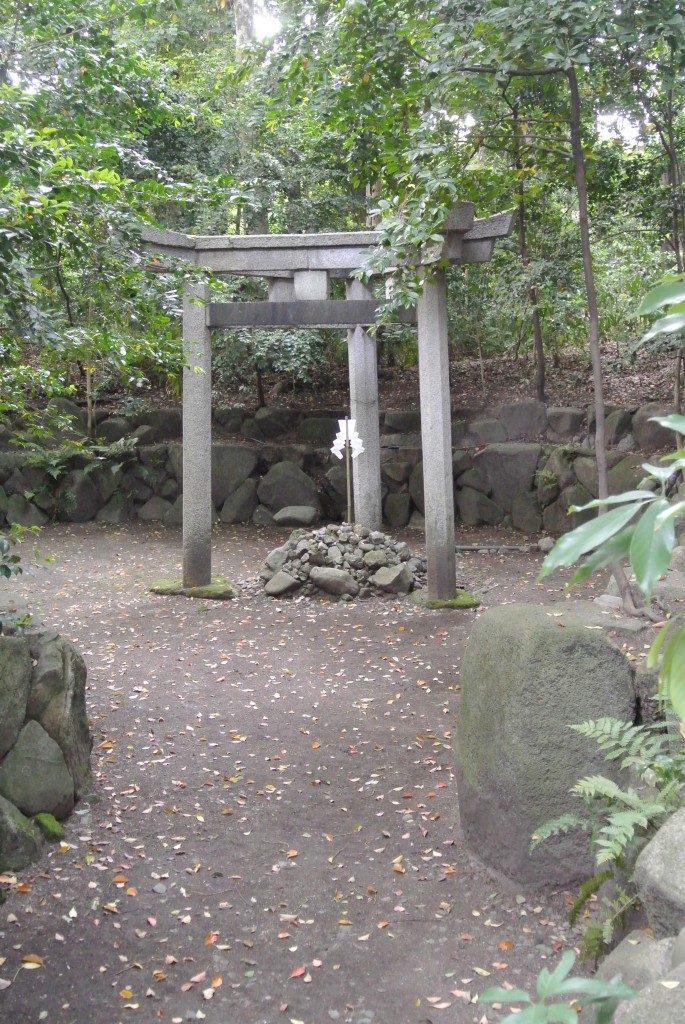
The triangular torii should be standing in water, known in one variant as Moto Tadasu no Ike. The name suggests it was the original of that at Shimogamo, and as with the Kamo clan shrine there is a festival in which participants wade through the water for good health.
‘There’s another theory that it’s connected to Nestorian Christianity,’ the board states cryptically, without explaining what it is exactly. Fortunately, the Wikipedia entry for Mihashira Torii (three-legged torii) amplifies the theory somewhat:
The primary historical example of a mihashira torii is found in the records of Konoshima Shrine in Kyoto. These records states that a triangular torii was rebuilt in 1716-1736, after a fire. The text hints at a reference to Nestorianism in the construction of the torii, and says that the three pillars represent the heavens, the earth, and mankind. This is not an interpretation common in Shinto beliefs.
This, to me, is bizarre. First of all, no one in their right mind in eighteenth-century Japan would claim to possessing anything connected to Christianity. The Tokugawa were paranoid about the European religion, and every single known Christian in Kyoto had been burnt, crucified or forced into hiding in the remotest of villages. Persecution was so intense that mere suspicion could lead to the most excruciating torture. (See my book on Hidden Christians.)
Secondly, there is nothing at all odd about the three pillars representing heaven, earth and mankind. This is the Taoist triad, and as anyone familar with Shinto knows, there was a huge amount of borrowing from Taoism. The emblem of the mitsudomoe (mitsu tomoe) is a prime example, with its three commas twirling round each other. ‘Some view the mitsudomoe as representative of the threefold division (Man, Earth, and Sky) at the heart of the Shinto religion,’ says the Wikipedia page on mitsu tomoe. Wikipedia here confounds Wikipedia – a glaring instance of why it’s not to be trusted!
So if the torii has nothing to do with the Trinity, what has it to do with? As mentioned, there is another three-sided torii in Tsushima, and there are striking similarities between the two. Both were built at an unknown date and for an unknown reason. Both have a pile of stones or rocks at their centre. And both are in watery settings, the one in Kyoto standing in a pond, that at Tsushima standing in seawater as the incoming tide covers its base.
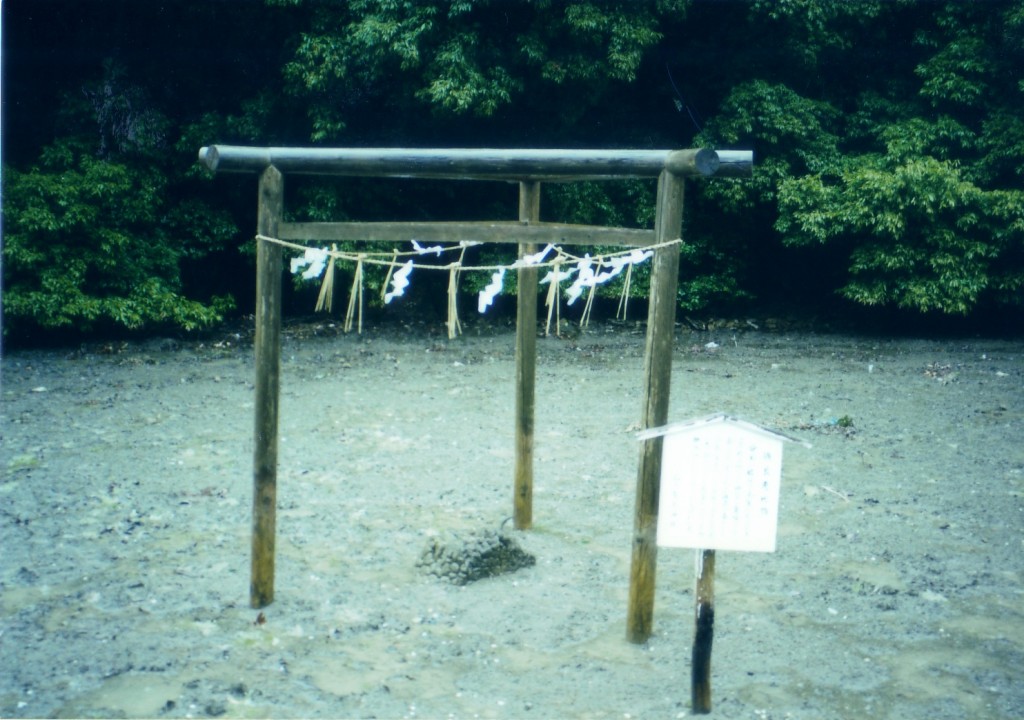
The three-legged torii at Watatsumi Shrine in Tsushima, close to the Korean peninsula. The notice says that this is how the structure is thought to have looked originally. That at Konoshima Jinja has been rebuilt in modern times.
Here I’d like to put forward a theory of my own, linking the two torii with the Hata. Since the clan moved en masse from Korea into Kyushu, it’s almost certain that the first port of call would have been Tsushima. You can actually see the island from the tip of the Busan shoreline.
The torii stands in the grounds of Watatsumi Shrine, which faces directly towards Korea. It would have made a natural landing ground. Indeed, this is almost spelt out by a row of torii running down into the sea to welcome visitors. Could not the torii mark the spot where a Hata leader first set foot upon the shore – the ‘descent’ of an ancestral kami? There are similar markers along the Inland Sea shoreline where ‘kami’ ‘descended’ onto sacred rocks (the one at Kamikura Shrine in Wakayama Prefecture being a notable example).
The Hata had spent centuries under the influence of the Koreans, whose religious outlook was shaped by Siberian shamanism. Rock worship is a notable element, with the permanence embodied in the rocks contrasting with the perishable nature of human life. For Koreans, you could say, immortality is carved in rock.
A characteristic of shamanism is the summoning down of spirits, and the pile of stones in the middle of the torii would have acted as spiritual vessel. In a material world, rock gives the insubstantial spirit substance. In Shinto mythology, gods are described as descending in ‘rock boats’ for a similar reason. Wooden boats rot; rock-boats last forever.
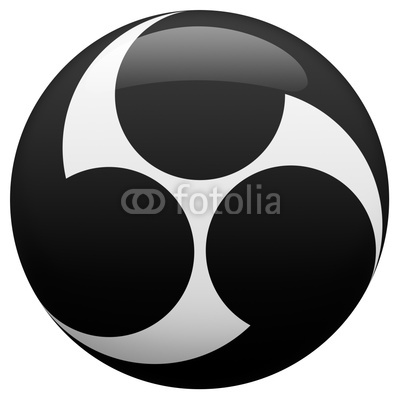
The Shinto emblem commonly seen at shrines, particularly on drums, is the mitsu tomoe (mitsudomoe), thought to symbolise Earth, Heaven and Humans.
The three-sided torii that surmounts the stones might well have represented the harmonious coming together of Heaven, Earth and Mankind in the shamanic ceremonies. The Hata would thus have been reflecting their continental origins, with Chinese teaching underpinning Korean shamanism.
Interestingly, Tsushima has a tradition known as the Tendo faith, in which a temporary altar is constructed in a lush forest for spirits to descend. ‘Such practices also appear as elements of rituals on the Korean peninsula,’ notes the Kokugakuin encyclopedia.
Torii only developed in Heian times, so one can presume the three-sided version dates from then or afterwards. But that doesn’t mean there wasn’t a three-sided structure of some kind before that, peculiar to the Hata (clans developed their own distinctive beliefs and rituals). Prototypes certainly existed in Korea in the form of gates at the edge of villages which were used as a chicken roost. (Torii literally means ‘bird roost’.)
Though gateways are two-legged, it’s worth noting the universal appeal of the number three in religious terms. It speaks to the tripartite nature of human thought. Past, present, future. Father, mother, child. Beginning, middle, end. Birth, life, death. Earth, Sun, Moon. Or in shamanic terms, the Upper, Middle and Lower Worlds. It’s worth noting too the structural solidity of the triangular structure itself, which makes it robust enough to withstand the elements and even the natural disasters that plague Japan.
When the Hata settled in Uzumasa, they would have brought with them the memory of their legendary migration with them. In place of the sea over which they had travelled, they turned a flowing stream into a pond. And in the middle they piled stones to assist the descent of their clan ancestors. Water, earth, wood, wind and sky – all the elements were there for drawing down the spirits of the past.
As the imperial regime tightened its control over the clans, the shamanic element of their early ways died away in favour of a centralised priesthood. Uniform officials replaced feathered shamans. And as the ritualists took charge, the whole purpose of the three-legged torii was forgotten as the art of summoning spirits was replaced by formulaic utterances. With the openness of outdoor worship replaced by buildings that housed an unseen ‘spirit-body’, the three-sided torii was left to decay in the water in which it stood. A once magical triangle had lost its magic.
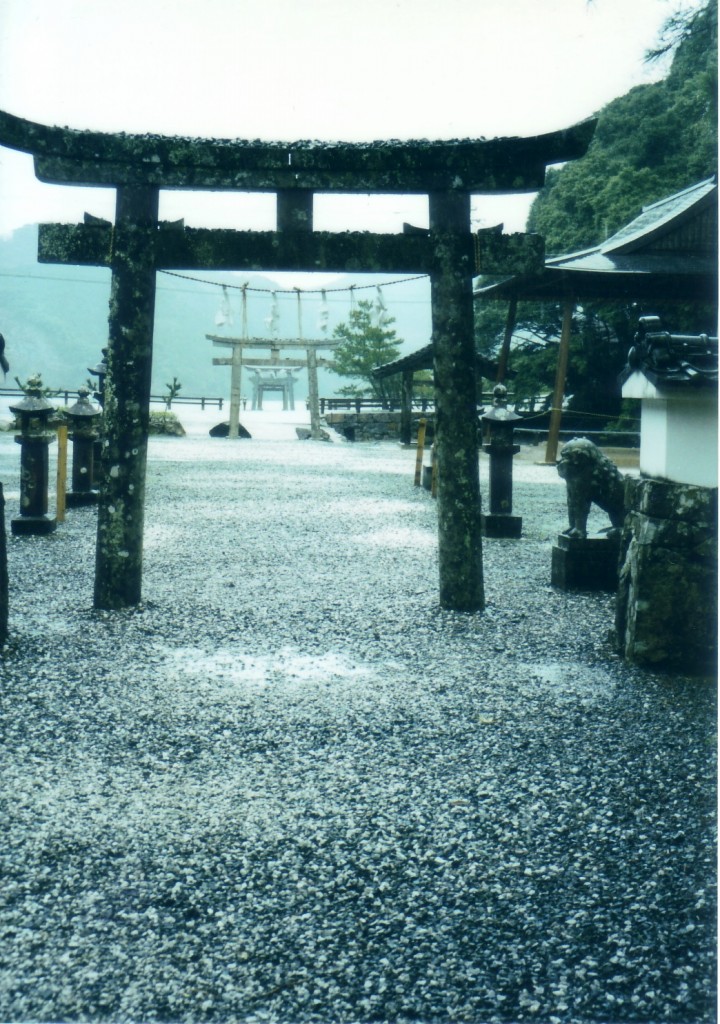
The torii at Watatsumi Shrine lead significantly down to the sea with the outermost becoming semi-submerged at high tide. The shrine is on the side of the island facing towards Korea: what ancestral spirits might they be welcoming?
For an Overview of the Hata, see Part One of this series.
See Part Two, about Hata Kawakatsu, founder of Koryu-ji.
Or see Part Three about Konoshima Jinja (Kaiko no Yashiro).
For part five of the series on ties with Buddhism, please click here.

